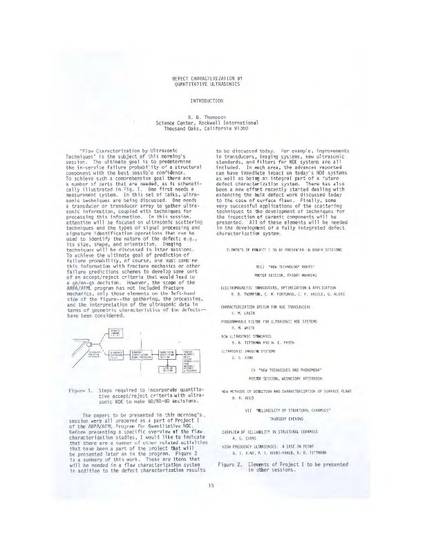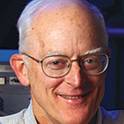
Article
Introduction
Proceedings of the ARPA/AFML Review of Progress in Quantitative NDE, September 1976–June 1977
Document Type
3. Defect Characterization by Quantitative Ultrasonics
Publication Date
5-1-1978
Disciplines
Abstract
"Flaw Characterization by Ultrasonic Techniques" is the subject of this morning's session. The ultimate goal is to predetermine the in-service failure probability of a structural component with the best possible confidence. To achieve such a comprehensive goal there are a number of parts that are needed, as is schematically illustrated in Fig. 1. One first needs a measurement system. In this set of talks, ultrasonic techniques are being discussed. One needs a transducer or transducer array to gather ultrasonic information, coupled with techniques for processing this information. In this session, attention will be focused on ultrasonic scattering techniques and the types of signal processing and signature identification operations that can be used to identify the nature of the defect; e.g., its size, shape, and orientation. Imaging techniques will be discussed in later sessions. To achieve the ultimate goal of prediction of failure probability, of course, one must combine this information with fracture mechanics or other failure predictions schemes to develop some sort of an accept/reject criteria that would lead to a go/no-go decision. However, the scope of the ARPA/AFML program has not included fracture mechanics, only those elements on the left-hand side of the figure--the gathering, the processing, and the interpretation of the ultrasonic data in terms of geometric characteristics of the defects-have been considered.
Copyright Date
1978
Language
en
File Format
application/pdf
File Size
6 p.
Citation Information
R. Bruce Thompson. "Introduction" (1978) Available at: http://works.bepress.com/rbruce_thompson/60/
